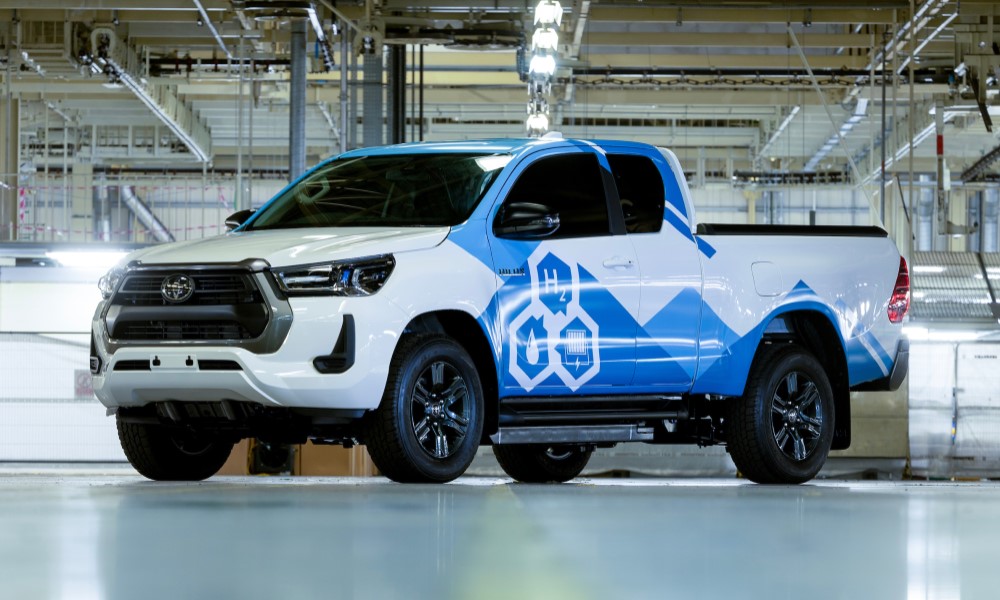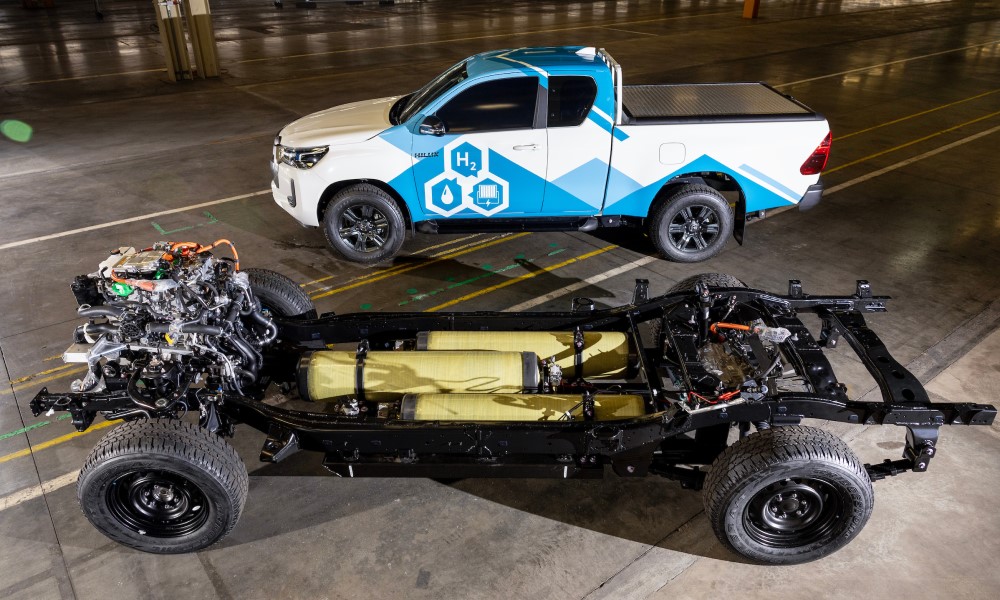
Toyota is no stranger to hydrogen-powered cars. But even with the relative popularity of its Mirai sedan, fuel-cell vehicles have not seen as much global demand as pure EVs. This may be the reason why other manufacturers are reluctant to pursue making this technology mainstream. But the Japanese automaker wants to show that hydrogen has a significant place in eco-friendly motoring.


It did that by pulling out the diesel powertrain of a Hilux pickup truck and replacing it with one that has fuel cells. It’s no surprise that a lot of the components of this prototype came from the Mirai, which is a good way to show how parts can be adapted for use in different vehicles. The straightforward layout consists of three high-pressure tanks squeezed between the chassis rails, and the majority of the electronics installed where the piston engine used to be.


But even though Toyota is using proven technology in the Mirai and the Hilux, it looks like putting them together wasn’t an easy process. For instance, the location of the tanks leaves no room for a traditional transmission and driveshaft. From the photos, it appears that the Hilux’s rear axle has its own electric motor. Additionally, it seems like the low-slung tanks drastically reduce the Hilux’s break-over angle, so this truck might see limited off-road use.

Regardless of these compromises, Toyota is clearly proud of what it has achieved. The fuel-cell Hilux was constructed by the company’s manufacturing arm in the United Kingdom, with the project being funded by the government. It will be interesting to see how the data gathered from this research program will impact the design of future utility vehicles.


0 Comments